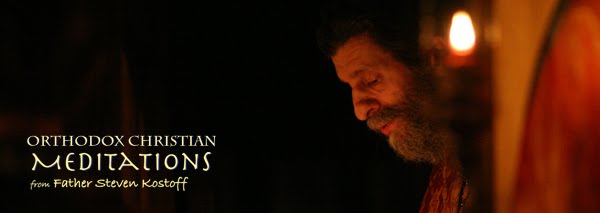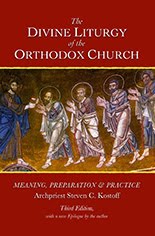Dear Parish Faithful,
On August 6 we celebrate the Feast of the Transfiguration of Our Lord and Savior Jesus Christ. This feast is thus embedded in the time of the Dormition Fast, but still retains all of its festal splendor.
We celebrated the Feast this year with Great Vespers on the eve, and we just completed the Divine Liturgy this morning, followed by the blessing of our fruit-baskets. Both services were well-attended, and hence we experienced a festal atmosphere for the splendid commemoration that begins at 6:00 p.m. We read in the Festal Menaion:
The Transfiguration is particularly rich in essential theological themes that reveal the very heart of our Orthodox Christian Faith. These dogmatic/doctrinal themes are expressed poetically throughout the services - Vespers, Matins, Liturgy - of the Feast in an abundant variety of hymnographical forms. The troparion and kontakion of any given Feast offer a "summary" of the Feast's over-all meaning and place in God's oikonomia (divine dispensation):
Thou wast transfigured on the Mount, O Christ God, revealing Thy glory to Thy disciples as far as they could bear it. Let Thine everlasting light shine upon us sinners! Through the prayers of the Theotokos, O Giver of Light, glory to Thee! (Troparion)
On the mountain wast Thou transfigured, O Christ God, and Thy disciples beheld Thy glory as far as they could see it; so that when they would behold Thee crucified, they would understand that Thy suffering was voluntary, and would proclaim to the world that Thou art truly the Radiance of the Father! (Kontakion)
Over the years and through repeated use, many of the faithful know these hymns by heart. If we listen carefully, or even study it outside of the services, the hymnography reveals very profound truths in the realm of Christology (the Person of Christ, both God and man); anthropology (the human person created in the image and likeness of God); triadology (the dogma of the Trinity); and eschatology (the Kingdom of God coming in power at the end of time).
Christology
On Mt. Tabor, when transfigured before His disciples, our Lord reveals to His disciples - and to all of us - His divine nature "hidden" in humility beneath the human nature of His flesh:
Enlightening the disciples that were with Thee, O Christ our Benefactor, Thou hast shown them upon the holy mountain the hidden and blinding light of Thy nature and of Thy divine beauty beneath the flesh.
The nature that knows no change, being mingled with the mortal nature, shone forth ineffably, unveiling in some small measure to the apostles the light of the immaterial Godhead.
(First Canon of Matins, Canticle Five)
Anthropology
Christ is fully and truly human. He is without sin. Thus, He is the "perfect" human being, by revealing to us the glory of human nature when fully united to God - something that we lost in the Fall. To be filled with the glory of God in communion with God is the true destiny of human beings and thus the true revelation of our human nature. By assuming our human nature, Christ has restored that relationship:
For having gone us, O Christ, with Thy disciples into Mount Tabor, Thou wast transfigured, and hast made the nature that had grown dark in Adam to shine again as lightning, transforming it into the glory and splendor of Thine own divinity. (Aposticha, Great Vespers)Thou hast put Adam on entire, O Christ, and changing the nature grown dark in past times, Thou hast filled it with glory and made it godlike by the alteration of Thy form. (First Canon of Matins, Canticle Three)
Triadology
The Three Persons of the Holy Trinity were revealed on Mount Tabor, as they were revealed in the Jordan at the time of the Lord's Baptism. On Tabor it is again the voice of the Father, and the Spirit now appears in the form of a luminous cloud. Every revelation and action of God's is trinitarian, for the Father, Son/Word and Holy Spirit act in perfect harmony revealing thus the unity of the one divine nature:
Today on Tabor in the manifestation of Thy Light, O Word, Thou unaltered Light from the Light of the unbegotten Father, we have seen the Father as Light and the Spirit as Light, guiding with light the whole creation. (Exapostilarion, Matins)
Eschatology
The Lord reveals by anticipation in His transfiguration on Mount Tabor, the glorious appearance that we await at His Second Coming. He also reveals the transfiguration of our own lowly human nature in the Kingdom of God, where the righteous will shine like the stars of heaven. Thus, this is a Feast of Hope, as well as a Feast of Divine Beauty, as we anticipate His eternal and unfading presence and our transformation in Him, also eternal and unending:
Thou wast transfigured upon Mount Tabor, showing the exchange mortal men will make with Thy glory at Thy second and fearful coming, O Savior. (Sessional Hymn, Matins)To show plainly how, at Thy mysterious second coming, Thou wilt appear as the Most High God standing in the midst of gods, on Mount Tabor Thou hast shone in fashion past words upon the apostles and upon Moses and Elijah. (Second Canon of Matins, Canticle Nine)
We bless fruit on this Feast because all of creation awaits transfiguration at the end of time. Even the garments of Christ were shining forth with a radiance brighter than the sun. The blessed fruit represents this awaited transfiguration when the creation will be freed from bondage. The grapes themselves would be used for the eucharistic offering of wine.
The importance of the Transfiguration is shown by the fact that it is recorded in three of the Gospels: MATT. 17:1-13;MK. 9:2-8; LK. 28-36. It is also clearly alluded to in II PET. 1:16-18.
According to the Festal Menaion:
"On the day of the Feast, fish, wine, and oil are allowed, but meat and animal products are not eaten, because it is within the fast before the Dormition of the Theotokos."
Truly a splendid Feast in the life of the Church!








